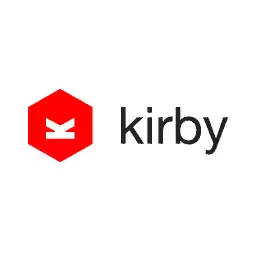Andy Budd

As a renown UX Designer and CEO of Clearleft, Andy helps companies like The BBC, Virgin Holidays and Penguin Random House with issues of digital transformation. Andy is a regular speaker at international conferences like SXSW, An Event Apart and The Next Web. He also curates the UX London, dConstruct and Leading Design conferences. In 2011, Andy co-founded the Brighton Digital Festival, a citywide celebration of digital culture attracting 40,000 visitors and over 190 events. Andy is a serial entrepreneur, dabbles with Angel investing and mentors at Seedcamp. These are just some of the reasons his company has won Netmag Agency of the Year on several occasions, and he's appeared on both the Wired 100 and BIMA 100 lists. Never happier than when he's diving some remote tropical atoll, Andy is a qualified PADI dive instructor and retired shark wrangler.
Talk: The Accidental (Design) Leader
Andy first came to prominence in our industry as a designer and web standards enthusiast. He was driven by a desire to improve and professionalise the industry, which is how he came to start the UKs first user experience consultancy, Clearleft. He never set out to be a design leader, but now find himself leading a team of thirty people, almost by accident.
In a quest to understand what makes a great leader, and help his friends in newly minted leadership positions, Andy started the Leading Design conference and Slack community in 2016. Over the past couple of years, Andy has interviewed dozens of prominent leaders and listened in on hundreds of Slack conversations about the art and craft of leadership.
In this session, Andy recounts his journey into leadership, shares his successes and failures, and the important lessons he’s learned on the way. The result is a talk packed full of design leadership heuristics suitable for anybody who is a leader, wants to be a leader, or has a leader.
Transcription
[Applause]
Andy Budd: I love Berlin. I’m so happy to be here. I love Marc, so I’m so happy that he invited me. Thank you so much.
Just a little bit of a warning. If you’ve seen me speak before, I usually do these sort of long, discursive, narrative style stories. I’m not doing that today. Today, pretty much is like a tips and tricks sort of playbook type of talk, so it’ll be a little bit different from what you might have seen before.
A few years ago, I spotted a trend. A lot of my friends have moved away from being individual contributors to maybe being a lead designer or maybe even leading a team, a department and, in some instances, even whole companies. They’d finally got their seat at the table that they’d been desperately wanting for all this time. But rather than being happy, they were more stressed than ever before. They’d hoped that somehow becoming a leader would solve all of their problems they’d experienced as an individual contributor when, in fact, it just created a ton more, a ton of new problems, problems they’ve never had to deal with or even think about before.
They’d fallen for this myth of leadership that somehow all you need is power and authority to make change and that somehow things just magically get better. However, it turns out that power and authority usually isn’t enough. Power might give you more opportunities to influence the conversation, but power alone won’t cut it. Instead, you need to develop a whole new set of skills, which I’ll be talking about later in this presentation. A pattern became clear.
I was chatting with all these friends over tea and cake. I am British. I’m standing on stage with a cup of tea as we speak. I was chatting to my friends, and we were having pretty much the same conversation. It was like a Groundhog Day, deja vu, over and over again with different people, but the same conversations.
My friends had found themselves in companies that really value design. In fact, they’d been hired to bring design into the fabric of the company and have a real impact. That sounded great at the interview, but it was proving really problematic. They were getting inundated by resumes, but few people were applying at the level they were looking for. Most were only 18 months out of a general assembly course and already calling themselves a senior designer.
When they did find somebody suitable, those people were in such high demand that, like, a bidding war would start and often they’d lose people. In the U.K., when you lose your house in a bidding war it’s called gazumping, so these people were getting gazumped for talent.
When they did find these amazing people, they only seemed to stick around for 18 months before being attracted to that next opportunity. As all my friends were spending more and more time recruiting, they’d basically become recruitment managers rather than design leaders.
If they did somehow manage to build that team, they were finding it difficult to execute. Doubling their teams, it seemed, didn’t double their output. In fact, every time their team doubled, it felt like their actual output halved. They were getting really, really slow. In particular, all my friends that came from the agency world, they were finding that something that used to take them 6 months to deliver might take 16 now in-house.
Another common problem that my friends were facing is the need to kind of constantly manage upwards. It’s all very well having a seat at the table, but it often felt to them like a highchair. Marketing had a budget. IT had power. Design just sat in the corner playing with the crayons keeping themselves entertained.
It turns out that managerial focus in most organizations goes where the money is. If you’ve got 100 people on your tech team and you’ve got a marketing team spending millions of dollars on above line advertising, if you had a 10-, 20-person design team or less, no one really seems to care what you say or think, and so you struggle to get look at.
Now, managing upwards has consumed so much of their time, they didn’t really have enough time to look after their teams to make sure that they were happy, to make sure that things were going well, and so the staff turnover was so high. You know in many cases, also, they found themselves in kind of weird situations where they were kind of like reporting to the head of IT or the head of product or marketing. They didn’t really seem to fit. As such, very little of that kind of managerial infrastructure was in place and they had to create all this stuff from scratch and look after their teams in new ways they’d never had to deal with before.
As a result, my friends were feeling stretched and wondering whether they’d made some terrible career move. Maybe design management wasn’t for them. Maybe they felt like they should go back to becoming individual contributors, back to a design safe space.
I’m sure we’ve all felt similar, whether it’s design or technology. We felt that feeling at some point in our career that suddenly somebody will come and unmask you Scooby-Doo style for the fraud that you really are. They’d fallen into the valley of despair, imposter syndrome.
Now, design leadership is still relatively new. We’ve had technologists, marketers, and boards for ages. However, design representation at the senior level is still a novelty, at least in the U.K. where I’m from. Most organizations are lucky to have a director level designer let alone a VP or the mythical chief design officer.
I kind of just want to get a quick poll. I saw a lot of hands up earlier that said you’re developers. How many people in the room would classify themselves as a design leader? Not necessarily a manager, but a design leader. I can see about four people. Okay. This talk is for you, primarily.
[Laughter]
Andy: But don’t worry. Can I see a show of hands who has got a boss in the room? Only about four of you. Come on. Who has got a boss in the room? Okay. That’s a little bit better. For people that have some kind of boss or manager, this is for you.
Now, hopefully, I’m going to show you a bunch of good practices which your boss is doing day in, day out, because they’re going to be amazing. But if you see maybe that they’re not living up to standard and hopefully this will give you a bit of a playbook, a set of tips to kind of hopefully steer them in the right direction and make them slightly better at their jobs.
So, the reason I’m talking about this is because I’ve been an accidental design leader, an accidental leader myself for the past 12 years. I say accidental because I never set out to lead a team or company. I didn’t really want to sort of be suddenly waking up one morning and managing 30 people. I had no real training. I just sort of fell into it.
This is probably how the majority of leaders--design, technology, whatever--find themselves. They just fall into it. You take someone that’s good at doing one thing like design and say, “Okay, you must be good at doing something else you’ve never tried before. Give it a go.”
I need to get way better so, about three years ago, I started a Slack community. It’s now got about, like, 800 design leaders from all the big sort of tech companies. I wanted to absorb and learn as much as I could from them. That’s also when I started the Leading Design Conference. One of the benefits of running a conference is you get to speak to 20, 30, 40, 50 amazing design leaders. You get to see all these great talks and then hoping that somehow, just almost by being in the same room with these people, some of this magic and wisdom would rub off. I’m not sure it has, but I’m keeping cracking on it, I guess.
If you are interested in coming to the Design Leadership Conference, we’re doing one in New York in June. If you are running a team in-house, a design team, then drop me a line and I’d love to have you join the Slack channel.
As I said, I never set out to be a design leader. Who dreams of growing up as a little four- or five-year-old, “I want to be a manager, mommy”? I was part of Generation X. I was part of that generation that thought management were the enemy, kind of like the office space kind of film or movies that you think, you know, you want to go and smash the fax machine in or the photocopy. You didn’t want to kind of have responsibilities.
Managers were the enemy until suddenly I became one. I accidentally became the enemy.
Some days I feel I’m the living embodiment of the Peter Principle, the idea that you rise in a hierarchy of a company to the point of your own incompetence. I do sometimes feel that but, also, I think I’ve designed the company to be like that. I’ll sort of explain.
When I started Clearleft, I hated the classic model of leadership, the sort of superstar designer in the sort of black polo neck who kind of like lorded over all the psychopathic juniors to fluff their own egos. These design gods that are out there, they just wanted to be the one unquestionable source of truth and anyone that kind of asked them why they were doing this would get a firm and stiff rebuttal. It was all very madmen, and I hated this view of design.
It was just a traditional management approach often kind of shown by this pyramid where those high up in the organization got there by standing on the shoulders of their team. That allowed them to have a view over the horizon. They could scan the horizon for what was coming new. But they also exerted pressure on the people below, crushing their shoulders, and sometimes crushing their dreams. That was a model that never attracted me.
I was much more attracted to something that I later found out was called servant leadership. There’s a crazy title book called “Orbiting the Giant Hairball,” which is all about kind of design leadership in traditional advertising companies. They talk about this sort of metaphor that design leadership should be or design leaders should be the roots, the trunks, and the branches of the tree, providing support, nutrition, and stability. Your team is the fruits, which you push upwards to the sun, giving them nutrition, carrying their weight on your shoulders. That was a much more attractive model of leadership, for me anyway.
The other idea is kind of like hiring people who are better than you and then providing a space so they can get on and do their work. I don’t see the logic behind hiring great people and then telling them what you think they should do rather than listening to what they think they should do or be doing. This model is kind of, you know, the idea of providing groundcover, providing air cover, ground support, and clearing the barriers away. It just seemed like a much more grownup model to me.
Also, I read this book 12 years ago called “The E-Myth Revisited”. It’s a really old sort of NEF entrepreneurship book, but the one piece of advice I took from it was, as a leader, as an entrepreneur, you need to constantly be offloading the tasks that other people can do to give you the time and energy to focus on the tasks that only you can do. It’s basically a fancy way of saying bad leaders dictate; good leaders delegate. This is obvious wisdom, but it’s still very true.
I’m also fond of saying that processes don’t make good products, people do. You can have a team full of amazing people and it doesn’t work, it doesn’t matter if they’re following an agile process or lean process or waterfall process or something else. If they’ve got a vision and they’re working together, great work is bound to emerge. Similarly, no amount of process is going to take a failing team and make them any better. They’ll probably just fail slightly more efficiently.
Our focus was to kind of hire people with a calling, not just people with a great looking resume or portfolio that can just talk the talk, but people who really cared about their craft, who were continually wanting to improve. It’s worth noting there are very few people out there with a genuine calling, so it’s not a great scaling mechanism. Clearleft is a 30-person company. We could be a 300-person company if we didn’t have that kind of sort of barrier, but we wanted to surround ourselves with people who had that passion that we did, so scaling on passion alone is really, really difficult.
That being said, our industry is an industry based around talent. And so, to be a great design leader or a great leader in any sense, you need to basically become a talent scout. It sounds glib, but the easiest way to hire people to build a great team is to build a team that people want to be on. If you’re in-house, you want to be the ones that look like you’re having the most fun, look like you’re learning the most, look like you’re shipping the best products.
if you’re an external agency like us, again, you want to surround yourselves by great, inspirational people. Be the team that people want to come and leave their job for, even if maybe they’re taking a downgrade or a pay cut. They want to be where the sort of source of the action is. They want to grow as individuals.
When Clearleft started back in 2005, we were arguably one of the first UX agencies, in the U.K. at least. And so, people really, really wanted to sort of come and join us. But even then, it takes hard work. It means getting out there. It means speaking at events. It means growing your influence. It means having opinions. It means going and constantly going to events, talking to people, having coffees, and sort of feeding that sort of talent pipeline.
Also, it can’t just be about you. You need to go out there and show the amazing work your team does. If people are attracted to great teams, you need to put your team front and center.
It’s also important to realize that salaries often are just table stakes, particularly if you are a creative person. The best designers I know, anyway, aren’t usually motivated by money. They’re motivated by interesting design challenges and the opportunity for growth.
The good thing is it produces a network effect. If you hire these people, they grow, they attract more people, and you just get this beautiful, organic growth. They come to you because of the opportunities you present, not just the paycheck.
You also obviously need to signal to the community that you really care about design and invest in people. There are things like generous conference budgets, support for people who wish to start speaking, organizing internal brown bags or visiting kind of like designers or tech people, visiting lectures, in-house workshops. There are loads of ways to kind of signal that you’re actually investing in people.
The number of companies I know that sort of see -- you know, going to conferences not as some kind of career development but as some kind of award for being a good sort of person like, “Oh, there are ten of you in the design team and one of you get to go to a conference this year. Aren’t you lucky?” That’s a horrible way of doing it.
Ever since we started at Clearleft, we had a budget that we set. Everyone has access to this budget. Everyone has got, I think it’s like, 1500 euros now or something. You can go to any conference or event you want. You can go on any training you want, kind of no questions. It’s yours to spend because we’re investing in you.
Also, your environment means a lot. You need to create a great environment to do great work. I’m not talking about beer pong tables and office slides here. The place doesn’t have to look like a frat house. You just need basic things like plenty of wall space, plenty of meeting rooms, space to focus, space to think.
Often, when we’ve worked with some of our clients, we’ve had to fight their kind of HR facilities team because we work with this one design client that really, really cared about the way their office looked, so all the desks had to be cleaned at the end of the night. All the stuff had to be stripped off the walls. In fact, they even hated you putting sticky notes on the wall in case some important person came and saw that the place was messy.
This was crazy. This was preventing the design team from doing design. Often, I joke that when good designers get together, their workspace looks like some kind of crime has happened because it’s just plasters of sticky notes and diagrams. If you came to my design thinking workshop yesterday, you probably sort of get to experience some of that. Actually, some of the jobs of design leaders are really, really sort of boring. It’s just fighting HR, fighting facilities to allow you to take that awful picture of a prancing pony off the wall and stick up something important like the user journey map.
Sometimes, it’s the case of having the right equipment. A friend of mine started a job recently, and it was six weeks until they got their laptop. For six weeks, they were coming to the office and just sitting around twiddling their thumbs not knowing what to do or how to be valuable because it took that long just to get the basic equipment to do their job. These kinds of things need to be cut down.
Steve Jobs apparently used to say that it’s better to have a hole an asshole, which I find slightly ironic from what we know about Steve Jobs’s management style. But I guess, like all organisms, one asshole is enough.
[Chuckles]
Andy: Thank you. [Laughs]
[Applause]
Andy: Very sweet. Basically, you get this sort of idea of these genius designers. We want to get this genius in because they’re just genius and everything is going to change. But you need to make sure that you have the right people that are going to work well with others.
I would prefer to have somebody that is a great team player than somebody who is going to come in and kind of piss everyone off and make them leave. You have to realize that no matter how talented somebody is, they could have a toxic effect on everything you’re doing, so be really careful when you’re hiring. We hire really slowly at Clearleft because we want to avoid those, the trauma of getting the wrong person on the team.
Also, when you’re sort of forming teams--this is true for designers and technologists--you need to have a balance of people with different attitudes and interests. A lot of early-stage startups show themselves as pioneers, people at the cutting edge of technology. When the company starts to grow, those pioneers feel out of place because it’s now not about kind of charting new frontiers. It’s about taking what you’ve got and turning it into something valuable, to settle, and to kind of extract value from that product.
It might be time that the pioneers move on and you start building settlers. Maybe, as the company gets bigger, you need to get some team planning to make sure that the infrastructure are in place. Actually, a lot of design leaders and managers are the kind of infrastructure people. You need to have a good balance and don’t just think you’re going to fill a company full of amazing, genius, rock star, unicorn designers because they’re going to get bored and leave really quickly when they realize it’s optimizing your ad flow process.
You’ve got this amazing team. You spent three months, tons of hiring, you’ve got the right people in. How do you keep them for longer than 18 months? One of the biggest reasons I see for people leaving jobs early is they were sold this amazing culture and, when they get in that culture, collaboration doesn’t exist. It’s not what they’ve been promised.
One of your jobs as a leader is to make sure that you don’t just sort of create a set of fancy values that you pay lip service to to excite people to join. Those values actually become part of your business, part of your culture, and you live those values.
Purpose is important to people. Create a clear mission, a clear set of values that people can align with and get behind. Make sure that your decisions as a leader meet those values. Also, be aware that if they don’t meet those values, you want someone to call you out on that and say, “Actually, look, Andy. These are our set of values and this thing here. You’re not behaving in this way. You need to kind of change.” That’s tough sometimes for people to hear.
“People who believe in the meaning and the goal of what they’re doing are much more likely to stay than people that just see themselves as a resource to be sort of utilized and depleted.”
Another great way of kind of retaining people is to foster a sense of community and collaboration. Now, you want to surround yourself by people that you actually like spending time with, people that you care for. You’re probably going to spend seven, eight, nine hours of the day. You’re probably going to spend more time with them than you do with your family or children, which is a problem in its own right in our kind of working culture.
This means creating sort of a tight social network. One way of doing this is obviously to merge your work and your life. I see a lot of that in Silicon Valley, arranging movie night, barbeques, after work drinks. It’s all really great, and we’ve done this before, particularly when you’ve got a young team. However, you need to be conscious that people have outside lives, outside commitments, families, home lives. People feel pressured.
If your boss says, “Come tonight. We’re doing tequila shots,” you might not be comfortable feeling like you can say no. And, particularly in this sort of #MeToo environment, it’s possibly not appropriate. Try not to pressure folks into doing too much of out of office stuff and try and do as much of it in work as possible.
Maybe try and do it without alcohol. I know that’s kind of tough for maybe a Berlin audience here, but sometimes it’s more fun to kind of go and have a juice evening or have lunches with the team than going and boozing up. I’m not saying don’t booze it up because I like beer as much as the next person, but you need to understand that there are people in your team that that doesn’t work for them, and you don’t want to be excluding. You don’t want to be exclusive.
There’s a lot of research that shows that people don’t leave companies. They don’t even leave teams. They leave managers. If you’re a boss and you find yourself in a situation where lots of your staff are leaving, it’s easy to sort of try and protect your ego and go, “Well, there are other reasons. It clearly isn’t me. This person wasn’t a great fit. They probably weren’t good at their job anyway. They clashed with other people,” but we build these lies to protect ourselves, to protect our own ego.
If you’re seeing a lot of people leaving your company, you probably want to say, “How am I contributing to this? What do I need to do to change myself, my environment, my culture to prevent this from happening?” You tend to find that the best people move on because they’ve got lots of opportunities. The people that don’t have those opportunities stay, and that’s not a good place to be.
A great way of doing this is just to organize feedback sessions, regular feedback sessions for you as a boss. This can be painful, but it can be an important learning experience.
Another reason people leave is just burnout. Constantly sprinting to hit that next deadline is exhausting. Having no flex in your resource planning is exhausting. Constantly saying yes to every project is exhausting.
I think one of the reasons people leave after 18 months, particularly in internal teams, is because they look ahead at the next 18 months and it looks no different from the past 18 months. They’re burnt out, they’re tired, and they want to do something else.
As designers, one of the other problems we have is we just want to be helpful, so we say yes to everything. I think it’s really important for us to learn to say no. I find developers have got this down pat. If you’re a designer and you want to learn how to say no, hang out with developers for a while and you’ll learn that important skill.
[Laughter]
Andy: You also need to be better at scheduling your time and building time for innovation, whether it’s 20% time, whether it’s half days, whether it’s taking weeks off to kind of go and play with technology, you need to protect this stuff because that is often the thing that your team will live for. If you’re working on a massive project, try not to put them on another massive project. Try and give them a little design sprint or just give them some time to kind of deal with their design backlog or just the admin mess.
Another thing to kind of break out the tyranny of the sprint is to recommend breaking your thinking, your product backlog into shearing layers. The bulk of your team effort really should be on the current or the next sprint or release. However, you should be putting about 20% or 30% of your effort into what’s coming next, that product that will be coming in six months’ time that you need to start gearing up for and thinking about. Lastly, maybe 10% of your effort should be going on the future, so running experiments that maybe, in three to five years, will become the next big thing that your company delivers.
Now, in my experience, good designers are happy to spend all their day perfecting their designs. They love to craft. They’re happier when they’re designing.
Really great designers want to ship. They want to create designs that get into the hands of customers as quickly as possible. They want to see their work being used, and they’re pragmatic. Great designers get super frustrated if it takes too long to ship or, worse, products get sidelined or canned because they’ve taken too long. One of your biggest jobs as a design leader is to ensure that the great design teams you have are able to execute and get stuff out the door.
One of the biggest challenges I see in internal teams is executing at pace. The best designers spend a lot of time removing organizational barriers, helping teams move fast, helping deliver to a higher standard. The design systems are a great tool for this, you know, part of the broader field of design operations.
Design operation is becoming increasingly important. How can we get designs out of sketch and in the hands of customers faster? How can we remove these barriers and make us more efficient; removing unwanted efficiencies and waste from the system?
I would argue that any in-house design team that is around 20 to 30 people or more should seriously consider getting some kind of design ops function in-house. That could be a role. It could be an individual. It could be a whole team looking at how design works in your company and removing those redundancies and optimizing for delivery.
One of the things you could do is model good behavior and visibly take care of the small things around the studio. Sometimes it’s as simple as cleaning up the studio, as a design leader, when folks are busy, offering to make a round of tea, particularly if you’re British. Just because you’re the head, director, or VP of design doesn’t mean you’re too good to not get your hands dirty once in a while, to take the bins out if things are overflowing, to give your team the space.
I think if you model that behavior, people will then start to look after their environment as well. If you don’t, people will go, “Well, I’m too important to bother opening the door or answering the phone. Let someone else deal with it.” These small things, broken windows types of mentality, have a trickle-down effect.
I’m sure you’re probably aware by now of Google’s Aristotle project. It’s been talked about adding for an item of design at tech conferences. Basically, Google did this large-scale project to see if there were any similarities in the high performing teams and the low performing teams in Google. They created this list of attitudes of what works for tech companies. Impact, meaning, some of the things we talked about, clarity, dependability were really, really important. But the key finding was that psychological safety was the biggest indicator of performance in a team.
I sometimes wonder whether the whole San Francisco “fail fast, fail often” mantra came out of the leniency in hiring and firing policies. If you have lenient hiring and firing policies, you’re permanently afraid that what you do might get you fired. That is not a place of safety. Also, you’re permanently scared that if you say something stupid that people are going to think that you’re an idiot and you’re going to get fired, and that’s not a place of safety.
One of the biggest challenges, I think, of a design leader or anybody in a team is to make sure that the rest of your team feels psychologically safe to express themselves, to express their individuality, express their rules. It doesn’t mean that you have to do what they ask you to do, but it means that you have to listen and kind of accept that people want to be and feel heard.
In order to support that team, you need to make sure they have all the necessary resources and support structures, that we saw in the last slide, in place. They need to know that they’re valued. They need to know that their values are understood around the organization and that they are important members of the team and the company.
After all, designers are often having to fight for resources and justify their own existence. If they’re doing that, very little work gets done. A big part of your job is managing upwards, showing the value of design around the organization to make other departments, other teams really understand what you contribute.
This can be done in dozens of ways. Organizing lunch and learns, setting up a company-wide design team mailing list, arranging quick sessions with teams that don’t have designers. These are all great ways of showcasing the value of design around your organization, making sure that senior designers buy-in. Even things like being a great facilitator or knowing how to facilitate workshops or some of the stuff I was teaching yesterday around design thinking are great ways of exposing all the great value designers have to the rest of the organization so they don’t just think that you’re the delivery people.
Now, one of the challenges I think designers have is we have such a strong belief in the power of design. We often get frustrated if people don’t see it immediately. As a result, it’s easy for designers to get drawn into battles they can’t win and sort of leave feeling beaten up and deflated, believing that the organization just doesn’t get design.
Unfortunately, the old saying goes that if you want to trap flies, you catch them more with honey than vinegar. Technically and scientifically, that’s not true. Actually, if you want to catch flies, you use vinegar, not honey. Just a little tip there. But the old person’s tale still stands.
To be a really good, capable designer, you need to build a collaborative environment. You need to forge alliances. You need to demonstrate how smart design can help other people reach their goals because if you can help other people reach their goals, they will trust you. They would invite you into those conversations. They would invite you to those meetings. That allows you to spread the power of design around the organization, particularly if you’re helping people meet their individual and personal goals.
Actually, a little thing that we do at the start of every project is we ask everybody around the table to kind of express what they’re learning goals are for this project, both internally and externally. If we can find opportunities to help that person reach that goal to learn that new technique or technology, then everyone is a winner.
One of the best ways of operationalizing design, apart from building a design ops team, is to weave design into the governance fabric of your organization. Design is not being evolved just in delivering projects, but commissioning them, setting up the context for success. One of our clients, he did this really small, little hack, which I just thought was brilliant. This very, very large company in the U.K. had this horrible little Word document that the execs would use to kind of fill in to say this is what I wanted. They would fill in what I want, how much I want to spend, and when I want to get it, without any understanding of whether these three things were compatible.
He was asked to redesign the form, presumably just because it looked ugly and old. We’ve got someone to color in the form. This was a head of design, a VP of design. But rather than just making it look pretty, he reconfigured how new projects were conceived within the organization. For every kind of business metric, every KPI, he’d make a customer metric to make sure that if the client said, “We want you to double page impressions,” well, that’s great, but we’re not going to do it if that means that our net promoter score goes down. Just having these kinds of complementary pairs suddenly made the rest of the organization think about design and commissioning projects in a different way.
Apologies for the language, but I’m British, so hopefully it sounds charming. Essentially, there are two sorts of managers: those that protect their team from the shit that comes down from above and those that pass the shit directly around the rest of the team and the company. The best leaders are the ones that protect their team and shield them from all the crap that they have to deal with on a daily basis. You want a leader that you know goes to bat for you rather than someone that will just kind of pass the buck and go, “It wasn’t me. It was those people over there.”
This is actually one of the reasons why I think design leadership can be quite isolating because a lot of the time your team might not know all of the fights you’ve been having privately because you’re trying to not expose them to all of the stress because you want to give them a safe space to just deliver. If you have a design leader or manager in your life, every now and again -- I know it’s nice to have your boss give you some love, but sometimes it’s nice to give some of that back just to say, “Look, Andy. I know you’ve been having a tough time with X, Y, Z at the moment. I just want to say thank you for all the stuff you’ve been doing for us and the team.” As well as probably helping your promotional prospects, that person would just really, really appreciate that sometimes. That kind of little sort of emotional hug thing is really important.
Actually, the conference that I run, Leading design, is amazing because, basically, you get sort of 200, 300 design leaders in a room who are almost breaking down because it’s so stressful. It’s a really, really challenging space to be a design leader, and so you need support. If you’re a design leader, if you’re a new design leader, you’re probably making this stuff up as you go along. And so, having somebody that you could look to that’s a mentor, that’s a coach, that’s done this before, that can help you along the way is really, really important.
Frankly, a lot of other execs, a lot of MBAs, a lot of CMOs, CTOs will have coaching. If you see that other execs around your organization have that kind of coaching and support, ask for it yourself. If they don’t, it might even be worth kind of going to a coach directly or just a friend who is maybe a few years ahead of you in your career to kind of get some thought and advice from.
A lot of people spend all their time managing upwards. They’re focused on the career and they want to succeed. They want to give a sense to the bosses that everything is going great so they’ll be included in the next promotion. Unfortunately, if you’re that kind of boss and you’re managing upwards always, often you spend your life forgetting what’s going on in the studio, forgetting the rest of your team, and end up having happy executives but a disgruntled, demoralized team, and that’s not a good place to be.
Don’t spend your whole time managing upwards. This can be really difficult in a flat organization where there’s only one senior leader. It’s really tough to be a leader if you’ve got any more than four to six direct reports. If you’re in a larger company, this is why having a VP of design supported by a series of directors can be really useful because a VP of design’s focus is upwards and then the directors are sort of focused downwards and outwards. You need the support. Design leadership is sort of a team sport.
It’s also really hard to manage people that care because you’re having passionate conversations. Actually, if people don’t care, you just tell them what to do and they go away and do it. It’s sort of lifeless, but it’s easy. If you work with amazingly talented people--designers, developers, marketing people--you can get into really knotty conversations.
It’s really, really important to remember that what people are arguing about isn’t about you and your personality or the individual’s personality. It’s about the problem and the project, and it’s all focused on moving something forward. Sometimes it’s quite hard to remove your emotions from that equation, but it’s really, really important to do to stay sane.
Ultimately, good designers, they look after their team. They take interest in their team. They understand what’s going on in their lives. They understand what’s going on in their families, their kids, their sporting activities, and all this kind of stuff.
Make sure that you have regular one-on-ones. Make sure you connect with your team members. This is basic stuff, but the number of people I meet that are design leaders and when I ask them when they had their last one-to-one, it’s like, “Well, I did an annual review,” or maybe, “I do these things quarterly.” That’s not a close enough cycle to check in with people to make sure they’re happy, comfortable, and psychologically safe.
In these sessions, you need to spend less time talking about the minutia of day-to-day work, less time talking at them, to be honest, and more time listening. I see these sessions, these one-on-ones as a form of design research. I’m going in there with my sleuthing hat on to try and understand what’s going on so I can make it better.
The other thing is, I think it’s really easy if you are a design leader or leader of any kind. You spend all your life in emails or jumping from meeting to meeting. You can go weeks without really connecting with the people you’re looking after. You need to make sure that you spend time just walking the floor, whether that’s just like walking over to people for a chat, hanging out in the coffee area, but just generally making yourself available for chitchats because often the really, really useful, interesting stuff doesn’t come at the one-to-ones, which feel quite formal, but it’s that chat over coffee where someone says, “I’ve got this great idea,” or, “I’m having a problem here. Can you help me.” I know it’s really easy to be busy and get divorced from the day-to-day ebb and flow of the studio, but you need to be present to be a great leader.
Being present also means being able to give quick, actionable, timely, and helpful feedback, but make sure that feedback is said with kindness. There’s a book, which is very popular at the moment, Kim Scott’s book, “Radical Candor.” I have lots of problems with this as a Brit because there’s a lot of talk about rock stars and ninjas. It’s so kind of cheesy. It actually appeared in an episode of “Silicon Valley,” taking the idea of radical candor.
Really, really quickly, the idea is when you give feedback, if you give feedback that’s challenging, that’s really helpful, but if you do it in a kind of aggressive way, it actually zaps people’s attention. Also, you can do the opposite, which is what a lot of Brits do, which is kind of ruinous empathy.
I’ve been into tons of meetings where I thought, “Wow, that was really tough,” but we have a really tough conversation. The other person at the end of the conversation said, “Well, I just had a lovely chat with Andy,” because we’re not very good at emoting and being honest, us Brits. Trying to move to this area of caring passionately but challenging people, but challenging them not just to be a dick, but challenging them because you want to help them progress in their career. By them progressing, you progress as well.
The other thing to bear in mind is there’s not just one sort of mode of leadership. There are lots of leadership models out there, but different people at different times in their career need different things. Maybe if you’re somebody that kind of has a high level of competence and is very, very sort of like, you know -- sort of has a lot of individual sort of, you know, motivation, you might want to direct them. If it’s somebody that’s quite new and has sort of a low level of motivation, you need to support them. There are different kinds of approaches you need to satisfy different people in your team. If you try and approach everything by supporting, coaching, and delegating, you’re going to piss people off.
One thing I think we do really poorly in this industry is praising people for a job well done. It’s really important to kind of praise people publicly. I think actually praising people publicly and critiquing people privately is a better way to go. If you critique people in front of an all-hands meeting -- we had a client once that, basically, their all-hands meeting was almost like some kind of frat beasting process where slowly team after team would get up on stage and be humiliated in front of the rest of the company for not shipping and hitting their deadlines. The people running this team thought this was good for them, some kind of like military hailing that all we have to do is keep punching them in the face and eventually they’ll love us for it, some kind of weird, abusive kind of relationship. But not at all.
Praise publicly and often. Critique privately, but with care.
Like I say, the other thing is making sure that you’re looking after individual growth. Again, whether you’re a designer or technologist, this really counts. We want to get better. We want to learn. We want to grow. If we’re in a company that stops allowing us to do that, we move on.
Make sure that you have some kind of maybe leveling system in place. We started doing a leveling system four or five years ago. A lot of the companies now are doing this as well. Basically, it says, “This is what we think a lead looks like. This is what we think that--” this is just a small section. We’re probably going to be publishing our leveling system in a few weeks’ time.
This is what a lead looks like. This is what a principal looks like. This is what a director looks like. This is what a VP looks like. These are the behaviors we want to expect, because then when somebody comes to you for that one-on-one in that quarterly meeting and says, “Andy, I’m a lead at the moment, but I really want to move to a principal,” rather than it just going, “Oh, well, you’ve been here two years, so I’m going to give you that advance,” it’s going to be, “Well, okay, that’s great. You’re really, really strong in these areas. You’re less strong in these areas. Let’s put a little plan together over the next few months. If we can get you to do this, this, and this, then absolutely, no problem, we’ll level you up to that next level.” Knowing what the responsibilities are is really important.
Another thing that’s really important is giving your team autonomy. I talked earlier about hiring great people and getting out of their way. That can have a backlash, though, because autonomy without accountability is basically like the kids running the playgroup. It’s chaos. Accountability holds those people to account.
I used to use an accountability ladder, which I don’t do now because it, frankly, is a bit negative and patronizing. This idea that sometimes people aren’t aware of what’s going on. If something breaks, they blame somebody else. Maybe they just make excuses. If they’re a little bit more mature, they kind of just wait and hope or acknowledge the reality. People who are really good actually own the problems, they go about finding solutions, or they just get on with it.
If you have a highly accountable team, they’re just getting on with it. They’re finding solutions. If you have a team with low accountability, they’re blaming other people. They’re not taking any responsibility. That’s not a good place to be.
Recently, I found this switch on the ladder, which I think is a lot more positive. It’s actually written by a guy called David Marquette who wrote a really good management book called “Turn the Ship Around.” He was an ex -- well, at the time, he was a captain of a nuclear submarine. At the last minute, he switched from a submarine he spent three years learning how to command into one that he knew how none of it worked.
He’d go up and ask the sailors, “What does that do?” The sailors thought he was kind of like testing them, so he was like, “Well, I don’t know.”
Then he’d go, “Well, what do you think it does?” And he’s like, “Well, I don’t know. Should we press it?” “Yeah, let’s press it.”
This is a nuclear submarine, but people thought that they were testing him but, really, he hadn’t a clue. His sort of incompetence actually allowed the whole team to make their own decisions rather than just deferring everything to the captain. We’ve seen this. There’s a whole thing called high power index.
We’ve seen lots of airline crashes where the copilot, particularly in countries in Southeast Asia where there’s a high power index, where the copilot can see that the plane is heading towards a mountain but doesn’t really want to bother the captain because, well, he’s the captain. We better not flank that up because I don’t want to insult him.
Flipping it around is like, you know, when you’re talking to your team, tell me what you’re doing. When you’re talking to your leader, the first thing you might say is, “Tell me what to do,” and that’s a very low-level accountability. Then you might start saying, “What I think,” or, “I recommend,” or, “I’d like to do this.” As your accountability levels go up, you say, “Well, I intend to do this,” “I’ve done this,” or, “I’m currently doing this.” Again, that’s the ideal state we want all of our teams to be in where people are just getting on and doing stuff but informing you what they’re doing at the time so you can kind of feed in and be useful.
Those are really sort of my five key concerns I see repeating themselves amongst my friends over and over again: the challenges of finding talent, the challenges of retaining talent, the challenges of executing at pace, the challenges of managing upwards, the challenges of managing down. I’ve tried to share some of my own personal experiences. There really is no one size fits all kind of process to leadership, particularly creative leadership. Instead, it’s a mixture of folk wisdom and tactics. A lot of this stuff you see is bleeding obvious, to be honest, but it’s amazing how little of it is still being done.
However, very few design leaders, very few leaders seem to be doing this effectively. I think it’s worth taking these soundbites and repeating them time and time again because, ultimately, good design leadership is easy to understand, but it’s bloody hard to execute well.
Thank you very much.
[Applause]
Andy: Thank you.









